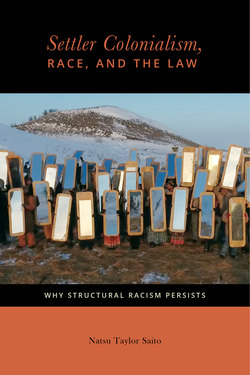Читать книгу Settler Colonialism, Race, and the Law - Natsu Taylor Saito - Страница 35
На сайте Литреса книга снята с продажи.
Privatized Violence
ОглавлениеThe Wounded Knee and Sand Creek massacres are often depicted as “excesses” associated with legitimate military campaigns.37 This is not only inaccurate, but reinforces the perception that Indian killing was primarily a military venture. In fact, it was a settler project, engaged in by “ordinary” civilians. From the early seventeenth century, British, French, and Dutch colonists offered bounties for Indian heads and then scalps, and as of 1694 the Massachusetts Colony was paying up to four times a farmer’s expected annual income for the scalp of an adult Indian man, with lesser amounts for the scalps of women and children under ten. By 1717 similar bounties were being offered in all the New England colonies and in New Jersey.38 After the so-called French and Indian War, the British reinstated a scalp bounty in Pennsylvania “due to settler demand,” and during the war for independence, the Americans proclaimed a “premium” for “Indian Prisoners, Scalps, or Tories in arms.”39
Ultimately, scalp bounties were issued in every continental US state and territory.40 By the mid-nineteenth century, Angloamerican colonists were pushing their “frontier” past the Mississippi and onto the Plains, and “acquiring” the northern half of Mexico as well as the Oregon Territory. While troops were occasionally called in, hundreds of nations in these territories were decimated by local settlers. “In California, even after official bounties were ended, consortia of private businessmen established their own and continued paying until a number of peoples in the northern part of the state—the Yuki, Yahi, Yana, and Tolowa among them—were entirely extinct.”41 Every settler had a “right”—and possibly a civic duty—to murder Indians.42
